Edgar Harwood’s wife
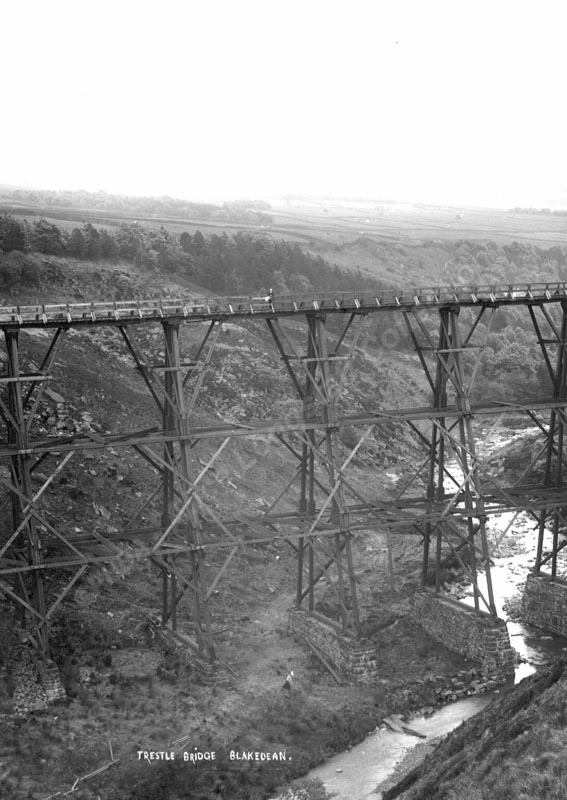
“Seldom has the district of Hebden Bridge been so greatly moved as it was last Saturday evening by the news of a terrible tragedy which happened at Blakedean whereby a well known local lady lost her life.” On May 28, 1909. Mrs. Ada Harwood, with her husband Edgar, her 16 year old nephew George A. Smith, and her friend Miss Milnes, her partner in the dressmaking and millinery business they conducted in Hebden Bridge had driven up to High Greenwood earlier in the day to stay with Mrs. Priscilla Clayton for a few days. A 66 year old widow from Shropshire Priscilla ran the 9 roomed boarding house with the help of a live in 22 year old Alice Maud Redman, a local woman whose job is given on the 1911 census as ‘servant’ waiter. After a few days stay in Heptonstall the family were looking forward to taking a ‘pleasure trip’ to Norway, land of the midnight sun, with some friends. From the newspaper account I read: “After tea they went for a walk in the direction of the trestle bridge, only a few minutes walk from the house. Mrs. Harwood and her nephew were a little apart from the others, and, as hundreds have done before, they stepped into one of the recesses to better enjoy the view. The youth doubted the safety of the place. It struck him as being rather flimsy. “Do you think it safe, auntie?” he asked. She replied that it was, having no knowledge of the awful danger which lurked under her feet: and sprang on tiptoe, or, as one might say, “prised” on tiptoe, to make a little test of the platform’s strength. And at that instant the tragedy was upon them they could not avert it, though only a foot’s space from safety. The wood cracked and gave way beneath their feet, Part of it went hurling down to the bed of the stream far below, and Mrs. Harwood fell with it. Overcome by the shock, her nephew found himself clinging to the railing, with no foothold. His walking stick fell through the gap into the gulf. How be got back to the comparative safety of the permanent way he does not remember. One can understand what a fearful shock it was to him as, clinging there and looking down, he saw his relative falling into that great depth to certain death. Mrs. Harwood was beyond help. Her lifeless body lay on a grassy plot just clear of the stream. Her injuries were fearful. They were, in fact, indescribable. Her head and body had apparently struck the framework of the bridge directly after disappearing through the hole, and probably instant death or merciful insensibility was caused before the ground was reached. In a second or two this peaceful valley had been transformed, for the watchers, into a scene of painful tragedy. Pending the arrival of the ambulance the remains of the unfortunate victim of the disaster were reverently conveyed to a spot near the stepping-stones at Blakedean, being carried thence under difficulties by P.C. Matters, and others. Bad news travels fast, and this news was all over the district soon after eight o’clock. From that time the main streets of the town were occupied with hundreds of people discussing the sad event.”

It was now May 2020 as I stood in the valley looking at the enormous stone stanchions that once formed the based of the trestle bridge 103 ft above. Blake Dean Railway had been built to take men, equipment and raw materials from Heptonstall to the site of three dams that were under construction at Walshaw Dean to provide water for the rapidly expanding town of Halifax. The trestle bridge had been designed by local Hebden Bridge architect and surveyor William Henry Cockcroft, and though I have Cockcrofts in my family tree I don’t presume to be related to this particular man. He and his two sons were passengers on the first truck to go over the bridge upon its completion so he was obviously convinced of its safety.

High up on the hillside to my left I could see a track running along the contour. A nearby quarry, Hell Holes, presumably supplied the stone for the stanchions, and the level track on the hillside held tracks that brought the stone from the quarry to the bridge site. It needed little imagination to conjour up the dreadful scene on that sunny May day over one hundred years ago. day. The railway serving the construction site had opened just eight years before and the Blake Dean trestle bridge had become one of the ‘must see’ sites of the Hebden Valley, along with the rocky outcrops of Hardcastle Crags. In the Hebden Bridge history society’s archives I’d found a fragile copy of ‘A Guide to Hardcastle Crags and neighbourhood’ compiled by an unacknowledged author in 1879 and published by W. Ashworth & Sons.
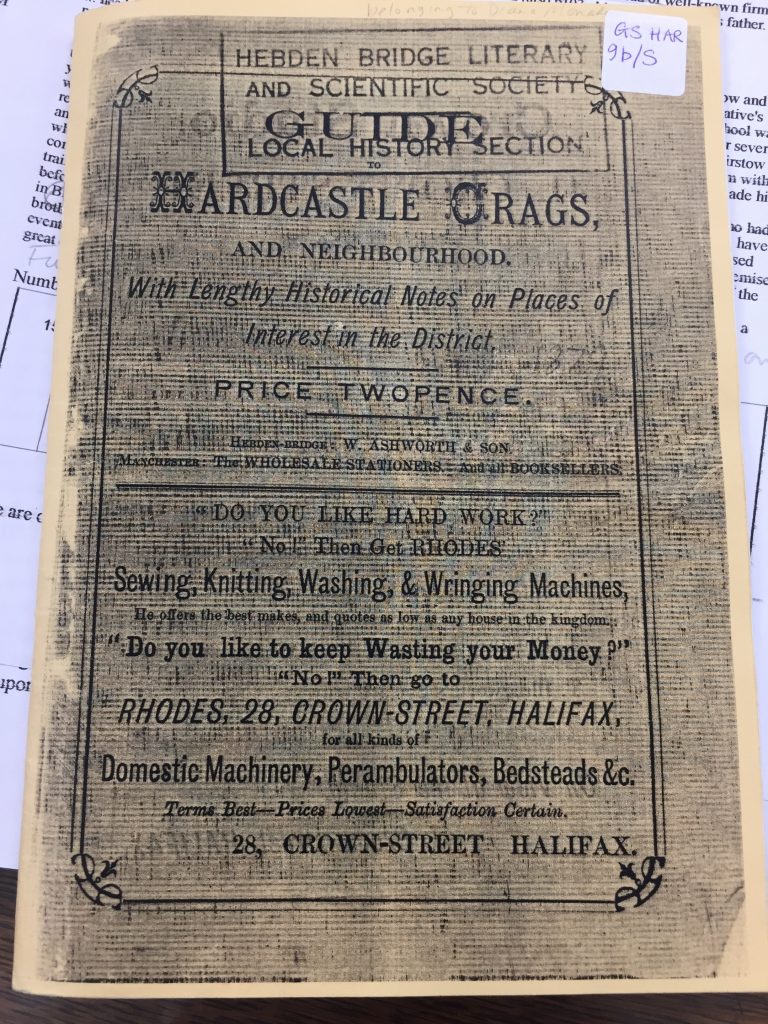
It had become a common practice for tourists to walk on the bridge for the sensation of looking down from so great a height. At the inquest into Ada Harwood’s death the contractors’ foreman said that notices had been put up at both ends of the bridge saying ‘Notice: no person allowed on these works or tramway except workmen on business. Others will be prosecuted. But visitors constantly pulled the warnings down. No criminal negligence was found but the jurors recommended that the signs should be replaced and if possible to erect barricades at the weekends when there were no works’ trains. My attention was drawn to the fact that the chairman of the jury was none other than Abraham Moss, one of my family members, who was to come to his own extraordinary and untimely death just eight years later.
I climbed up from the valley floor and followed the Widdop road along the hillside towards Heptonstall, passing High Greenwood, where the Harwoods had been enjoying their mini break. It is a beautiful stone building set just off the lonely Widdop Road, built in the late 1700s. It’s a building that tells of wealth and privilege with its symmetrical façade centred on a front door made all the more impressive by the triangular pediment above.
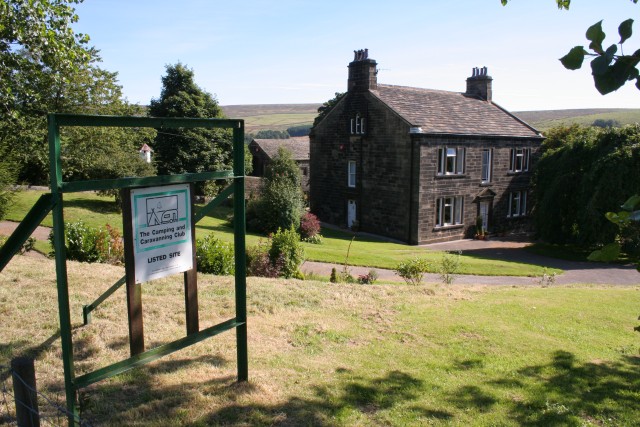
Today it’s surrounded by a well- maintained lawn and has expansive views in all directions. Close to the front door is a weeping willow tree causing me to wonder if the person who planted it knew of the association of the house and its unfortunate overnight guest. There’s a feeling of vast expanse up here on the moors heightened by the calls of the curlews who seemed to follow my progress along the hillside. Their bleak, windswept calls as they sweep and glide above me mirror my sentiments this spring morning. It doesn’t surprise me that in 1920 this very spot was the filming location of a silent movie, Helen of Four Gates, written by Heptonstall resident Ethel Carnie Holdsworth, an important working class social activist and feminist.
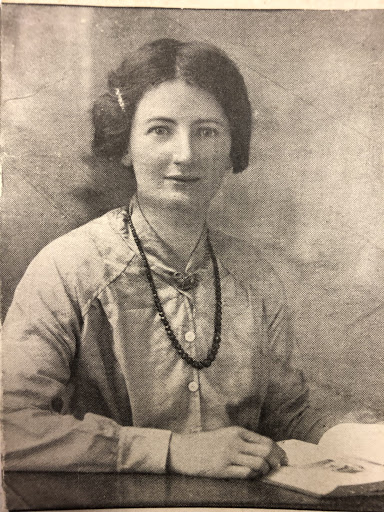
The raw scenery and the hard life of the local farmers is beautifully portrayed by pioneer film maker Cecil Hepworth, and it was to this very spot that Ethel brought Cecil to show him this remote location with its scattered farms and persuaded him to shoot the movie here. Its grainy black and white images heighten the hardships of the isolated life for these hilltop residents as the heroine battles against the abuse she receives at the hands of her family as well as those inflicted by the elements. Back in 1920, cinema-goers packed into the Co-op Hall in Hebden Bridge, eager to see a new film shot in the countryside around their town. Hepworth’s film career went public but failed to raise the necessary capital and the company went bankrupt and all of the original film negatives in Hepworth’s possession were melted down by the receiver in order to sell the silver. His feature films had been considered lost for many decades. However, an original 35mm. print of his 1920 film Helen of Four Gates was located in a film archive in Montreal, Canada in 2008 by Calder Valley film maker Nick Wilding and in 2010 Nick organized a screening of the silent movie at the Picture House in Hebden Bridge, probably the only screening of the movie since its release ninety years before. A little beyond High Greenwood I glimpsed Dick Booth Farm, the filming location used as Four Gates farm in the movie. In 1910 Dick booth was owned by Gameliel Sutcliffe and lived in by Wlliam Sutcliffe. (see blog about Gameliel).
The movie is available to watch: https://player.bfi.org.uk/free/film/watch-helen-of-four-gates-1920-online
Keeping the steep and heavily wooded valley enclosing the famed beauty spot of Hardcastle Crags on my left I soon came to Draper Lane. I was heading back in time to the site of Dawson City, home of the builders who had constructed the trestle bridge necessary for the building of the three reservoirs. I’d been fascinated by this story of this shanty town since first seeing photos of it in the White Lion in Heptonstall on my summer visits to the area. Perhaps it caught my attention because I’d visited the ‘real’ Klondike in Alaska myself in 2005. I even composed a song about this place, ‘Where are the ghosts of Walshaw Dean?’ Wooden huts for the workers were built at Whitehill Nook, just below Draper Lane in Heptonstall/Slack and it became quickly known as Dawson City, since it is said that some of the navvies had actually worked in the Klondike gold rush.
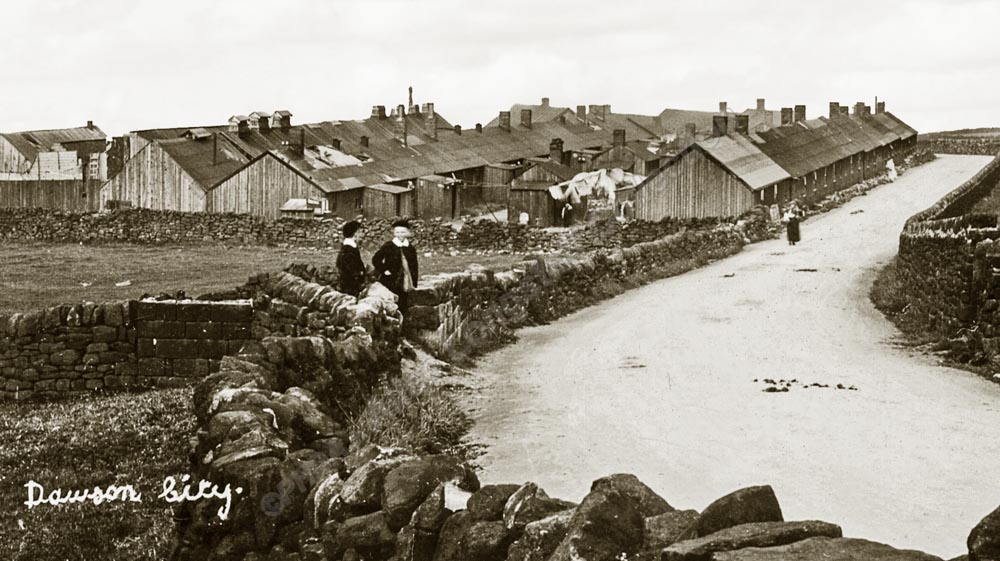
The construction of Heptonstall’s Dawson City commenced in October 1900 and by the spring of 1901 there were 22 huts to accommodate about 230 men with large dormitories and wash houses provided for single men. As wives and children joined their husbands the impact was felt by the local community of Heptonstall and a spare room in the school master’s house was brought into service for the additional thirty children living in Dawson City. Sanitation in the new city was obviously going to be a major problem and when outbreaks of typhoid and smallpox broke out a tent was set up to serve as a field hospital capable of caring for fourteen patients but it blew down in a gale! The gently sloping fields on either side of me today bear no trace of this fleeting community which, at its zenith consisted of living accommodation, workshops, storerooms, a locomotive shed, a tank for supplying the engines with water, a sawing machine, a mission room, a Sunday School and social club. By 1902 Hepton Rural Council was drawing attention to the “disgraceful state of things” at Dawson City, where children were dying soon after birth, drainage at the lodging houses was deplorable and “shebeening” (sale of alcohol without a license) was a growing scandal.
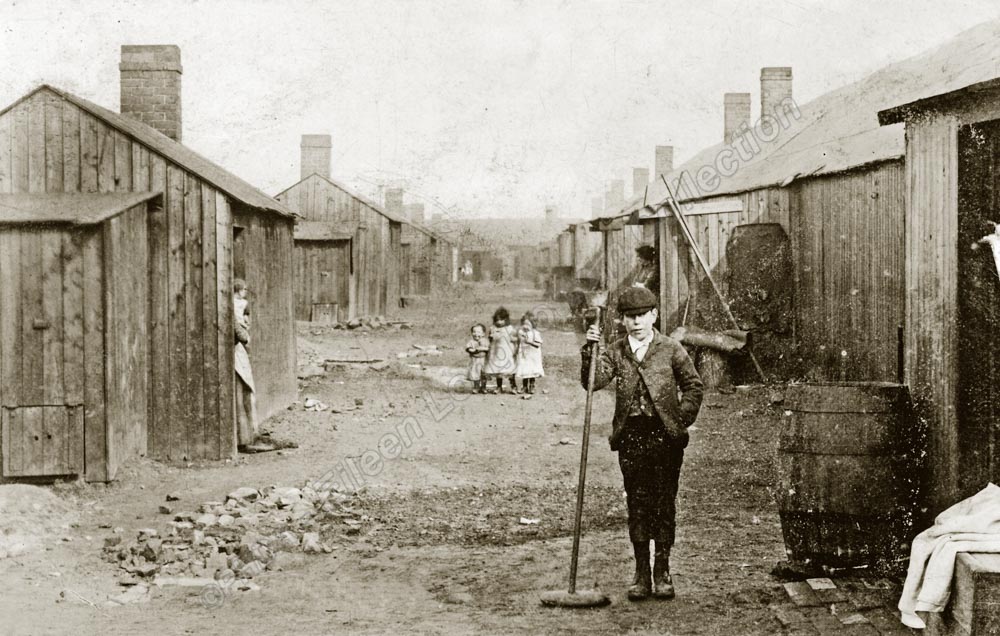
However, by the autumn of 1905 around 540 navies were living at Dawson City being taken to and from work in the “paddy mails” for their 12 hour shifts at the reservoirs. When the reservoirs were completed in 1908 the workers moved away and Dawson city became a ghost town, its site soon to be indistinguishable from the surrounding moorland. When Ada fell from the bridge in 1909 the trestle had become a tourist destination though it was still used by the railway until 1912.
Only two months after the tragedy Ada’s niece, Bertha Moss, married Claude Redman of Pleasant Villas and the bride was given away by her uncle, Edgar Harwood, Ada’s grieving husband. What mixed emotions must have been in evidence on that day of rejoicing. A few days after my excursion to the scene of the tragedy I set out for Pleasant Villas, two semi detached homes at the top of Hangingroyd Road, one of the front doors having ‘Pleasant’ engraved in stone above the door and the other one having ‘Villas’ above.
At the turn of the twentieth century the two homes were lived in by two of the most successful textile manufacturers in the area, the Moss family and the Redman family, and when Bertha Moss married Richard Redman the two families became linked by marriage, not just business.
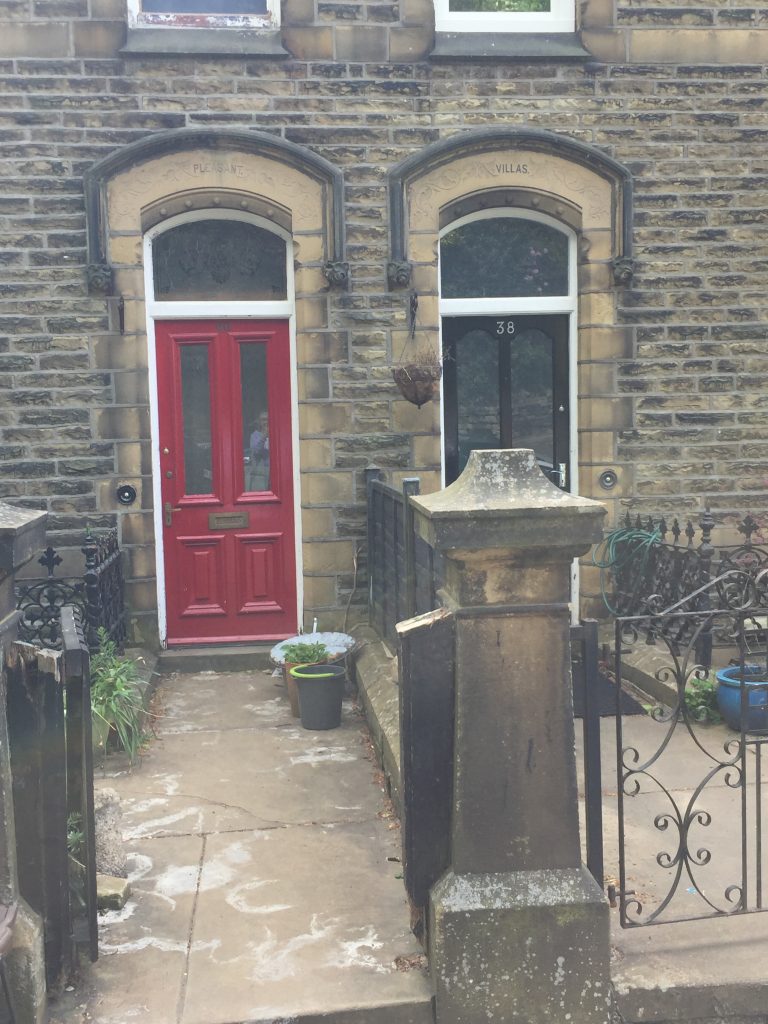
Later that same year another incident in this story stopped me in my tracks. Less than three months after his wife’s death Edgar married Mary Ann Edith Milnes, none other than Ada’s business partner in their dressmaking and millinery business!
(The story of Ada’s life to follow)
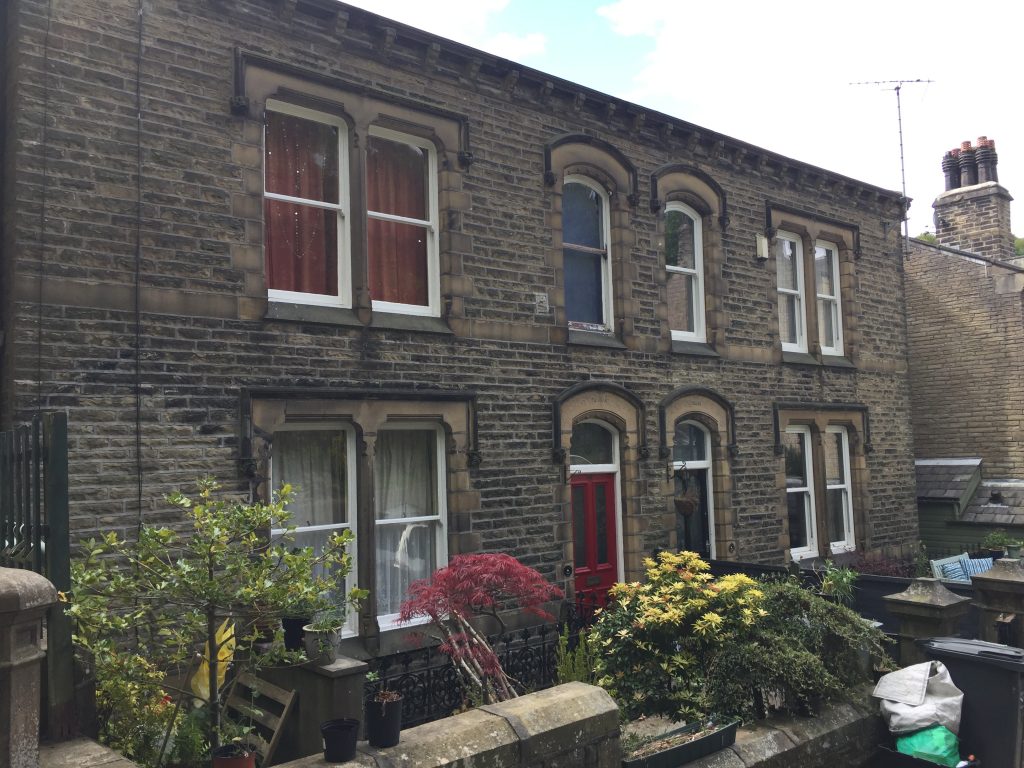
Leave a Reply